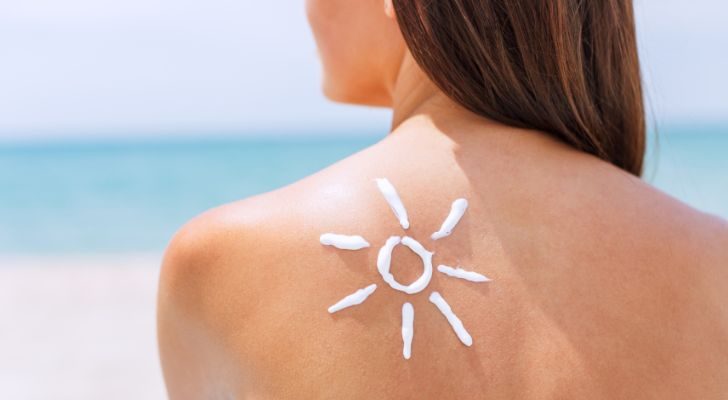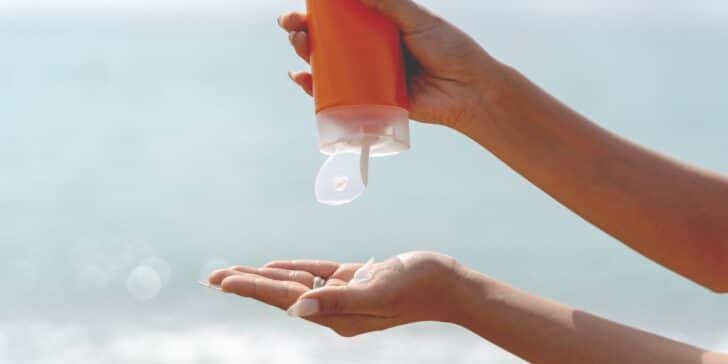National Sunscreen Day is an opportunity to promote sunscreen and raise awareness of the dangers of too much sun exposure.
People love to flock to the beach when the sun is out, and the weather is warm. However, spending too much time under the Sun’s ultraviolet rays could cause early aging and even lead to skin cancer.
The more you know about this critical issue, the better you can protect yourself while still having fun in the sun.
May 27 is the national day to learn more about sunscreen and encourage your friends to use it too!
History of National Sunscreen Day

People have been marking National Sunscreen Day since 2011. Coincidentally, the U.S. Food and Drug Administration (FDA) published a comprehensive set of guidelines about sunscreen that same year.
This guidance aimed to help customers choose the most suitable sunscreen to look after their skin.
While sunscreen has become increasingly promoted since then, it’s far from a new invention.
A chemist from Australia, Milton Blake, is credited with being the creator of the world’s first commercial sunscreen. In the 1920s, he began experimenting at home using organic compounds that could absorb ultraviolet (UV) rays.
By the early 1930s, his sun-protective creams were available for purchase. He eventually established a company called Hamilton Laboratories, which sold suncare and skin protection products.
In 1944, Benjamin Green introduced red veterinary petrolatum, colloquially called “red vet pet.” This non-commercial version of sunscreen was made from petroleum jelly. It worked by creating a barrier between the Sun’s rays and the wearer’s skin.
Red vet pet was used in the Pacific region by World War 2 soldiers, who were exposed to high levels of sunshine while on duty. It was included in their survival kits to protect against sun damage.
After the war ended, Benjamin Green added coconut oil and cocoa butter to red vet pet. It later became a product of Coppertone – the first sun care company in the U.S.
The first modern sunscreen labeled with an SPF (sun protection factor) was developed shortly after in 1946 by Franz Greiter, a Swiss chemist.
Franz Greiter’s “Piz Buin Glacier Cream” has since been developed further and is still being sold today. The original version was just SPF 2.
For comparison, many sunscreens today have SPF 15 or higher, and many health experts recommend using at least SPF 30. This indicates the level of protection the sunscreen can provide against the Sun – the higher the number, the greater the protective barrier.
But it wasn’t until the 1990s that most sunscreens on the shelves had an SPF of 15-30. Today, the sunscreen industry is worth around $10 billion per year. This staggering number shows just how popular sunscreen has become!
How to celebrate National Sunscreen Day

Practice good sun care.
Look after your skin on National Sunscreen Day by wearing sunscreen and staying out of the sun during the hottest hours – usually from around 10 am to 3 pm.
Wearing protective, loose-fitting clothing and a wide-brimmed hat are also great ways to guard your skin against the Sun’s rays. And don’t forget to stay hydrated!
Buy a new sunscreen.
If you’re planning a day out at the beach, why not buy a new sunscreen on National Sunscreen Day?
Perhaps there is a new product you want to try. Or maybe you’re curious to try one of the classic sunscreens like Franz Greiter’s Piz Buin Glacier Cream!
Raise awareness of sun care.
Now that you know the importance of good sun care, spread the message to your friends and family! You can encourage them to use sunscreen alongside overall good sun care.
National Sunscreen Day gives you the perfect reason to post on Instagram or any social media and tell your friends what you’ve learned about this protective product.
National Sunscreen Day FAQ

Should you wear sunscreen every day?
Doctors recommend wearing sunscreen every day. Even if the Sun is not very visible, the UV rays can shine through the clouds and still cause damage.
What does SPF mean?
You may know that SPF stands for “sun protection factor,” but that is it, really? Well, it reflects the length of time the sunscreen protects you against the Sun’s rays!
For example, if somebody were wearing SPF30, it would take 30 times longer for their body to burn than if they weren’t wearing sunscreen.
Is sunscreen recommended for children?
Sun protection is beneficial for people of all ages. Health experts recommend sunscreen with titanium dioxide or zinc oxide for young children.
5 Facts About Sunscreen

Sunscreen can help to prevent skin aging. People who use SPF15+ every day experience 24% less aging than those who don’t.
There are hundreds of sunscreen brands, including famous names like Banana Boat and Hawaiian Tropic.
During ancient times in Greece, people used olive oil to protect their skin from the sun. Olive oil’s antioxidative properties helped keep them safe from harmful UV rays.
Health experts recommend applying sunscreen every two hours. This is particularly important if you are sweating or swimming.
The average person will need around one ounce of sunscreen to cover their legs, arms, neck, and face.
Whether you’re a lifelong sunscreen advocate or you’ve realized the importance of good sun care for the first time, it’s easy to see why doctors recommend this product.
The next time National Sunscreen Day comes around, you’ll have plenty of inspiration for how to celebrate!
And don’t forget – today isn’t just about protecting yourself, so make sure you remind your friends and family to be sun smart, too!


















